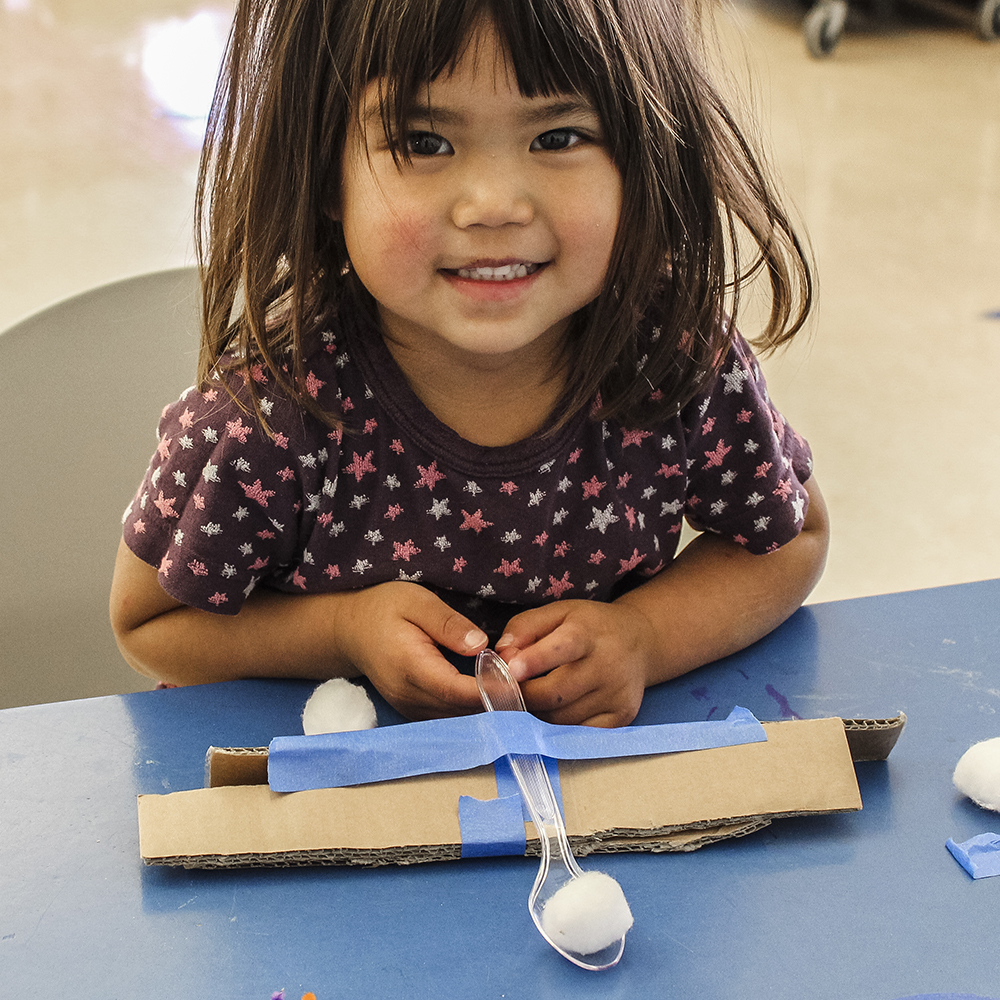Design and construct a catapult that launches cotton balls as far as possible! This maker activity helps children build creative thinking skills, such as divergent (brainstorming) and convergent (decision-making) skills.
Materials Required
- Cardboard strips
- Rubber bands
- Plastic spoons
- Strings
- Pipe cleaners
- Cotton balls
- Tape
- Popsicle sticks
- Pictures of catapults
Instructions
1. Start by looking at pictures of catapults and identifying their parts.
- Start by looking at pictures of catapults and identifying their parts.
- Explore available catapult materials. Materials can be used in a variety of ways, and not all catapults will look the same. Consider these questions:
- How much force will it take to launch a cotton ball?
- What materials can be used to replicate the key parts of a catapult? For example, which materials will the cotton balls sit in? What part can string be used for?
- Design and construct a catapult with available materials. Approach this as a trial and error process. Test the catapult by launching cotton balls. Experiment with the catapult construction.
- Using tape, mark a few lines on the floor to try to hit or pass with the cotton balls.
- Test the design. Launch cotton balls using the catapult.
- Design and redesign the catapult. Swap out materials and see how it changes the distance of the cotton ball.
Additional Tips
This activity can be done on a larger scale. Materials may include wooden boards, hammers, and springs to launch objects like tennis balls. For these larger scale catapults, adult supervision is recommended.
To add on to this activity, introduce children to similar launching devices like Trebuchets, ballistae, and slings. Try making one of these devices to launch cotton balls or heavier items.


